How does impatiens spread its seeds?
Impatiens is a slow-growing plant, and you need to start the last cold-damaged seedlings in spring about three months ago. The germination of impatiens seeds may take up to 21 days and occur within the first two weeks of germination. How do impatiens spread their seeds?
How does impatiens spread its seeds?
Wind Immortals spread seeds, not by wind, nor by animals, nor by water, but by "self-reliance". When its fruit is split, the pericarp curls inward and protrudes outward, popping out the seeds. There is also a kind of plant called spray melon, when the fruit is about to mature, there is a lot of mucus in the fruit. Once the fruit falls off from the stalk, the pericarp immediately shrinks, causing a lot of pressure, and the mucus and seeds are ejected from the stalk together. Can shoot as far as 5-6 meters!
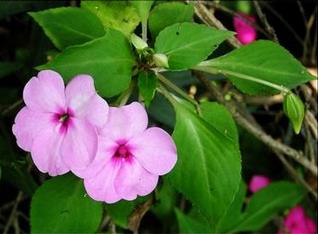
Some gardeners who save money may try to broadcast through the seed tray and then transplant the saplings, once they grow new leaves, but you will reduce the chances that if you start the seed, shock yourself in individual pots or six packets of cells. You have to transplant seedlings there anyway, so you may start them in their final home. Seeds that do not germinate any empty cells are a small price to pay for healthy, sturdy impatiens.
Planting impatiens seeds is a slow process, but a simple one. Fill the wet commercial seeds and start stirring, leaving half an inch of space between the top of the soil and the edge of the grower with each storage cell. Put the cell on a tray and fill it with water on the tray. Allow the combination to absorb the moisture of the mixture from the bottom to the top. Remove the tray and pour the rest of the water.
Put the two seeds on the soil of each unit and sprinkle them with dust and mix them with light. The cells at the top of the mist use clear water. The plastic covers the cells to keep moisture and put it in a bright spot to sprout.
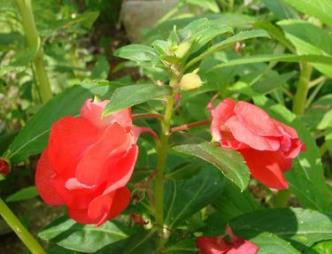
Once the seed has germinated and produced a pair of leaves, remove the plastic and fill the tray with cells in a sunny south window. If you don't provide a bright window, plant impatiens under fluorescent lights 16 hours a day.
Some garden experts believe that impatiens seeds do need an initial burst of sunlight to wake up the seeds, they grow stout, if you are strong and then move them to a dark area. The experiment used this theory to leave the seeds found two days before, in a sunny window. Then, sow the seeds, stir, cover and keep fresh, and move them to a dark place to germinate.
How do plants spread their seeds?
First, self-transmission, the so-called self-transmission, is spread by the plant itself, and does not rely on other media. The fruit or seed has its own weight, and after ripening, the fruit or seed will fall directly to the ground due to gravity, such as persimmon and Camellia oleifera, while some capsules and pods will produce the force of ejection when the fruit is ripe and crack, ejecting the seed, such as black stone. The spread distance of self-transmitted seeds is limited, but some self-transmitted seeds will have secondary transmission after falling to the ground. Birds, ants and mammals are all possible secondary disseminators.
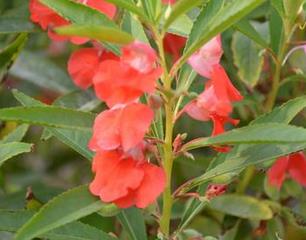
Wind spreads some seeds grow into appendages shaped like wings or feathers and fly in the wind. Most of the seeds with feathery appendages are herbaceous plants, such as yellow quail of Compositae, and woody plants such as willow and kapok. In addition, some small seeds have a large relative ratio of surface area to weight, so that the seeds can drift away with the wind, like orchid seeds. The achene of the dandelion of the Compositae plant, the crown hair expands when ripe, like a parachute, fluttering in the wind, spreading the seeds far away.
Third, water-borne seeds have a waxy surface that does not stick to water (such as water lilies). The peel contains air chambers and has a lower specific gravity than water, so it can float on the surface and spread through streams or ocean currents. The seed coat of such seeds is often rich in fiber, which can prevent the seeds from rotting or sinking by soaking or absorbing water. Seashore plants, such as chessboard feet, lotus leaves and olive kernels, have typical waterborne seeds.
Birds spread the seeds transmitted by birds, most of which are fleshy fruits, such as berries, drupes and cryptic fruits. Birds peck at the seeds of Lauraceae and spit them out. After the fruit is eaten, the seeds pass through the digestive tract and are excreted at will. Plants that rely on birds to spread seeds are a relatively advanced group, because birds spread seeds the farthest of all ways.
Ant spread ants usually play the role of secondary disseminator in seed transmission. Some birds feed and spread seeds, but they do not consume all the nutrients. On the surface, there are still some remaining nutrients for ants to eat. At this time, ants become second-hand communicators. The above phenomenon also occurs in the seeds of self-transmission or mammalian transmission.
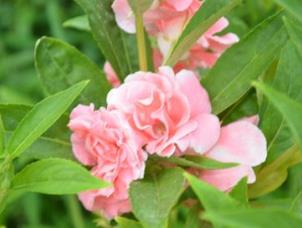
The spread of mammals, most of them belong to some medium and large succulent fruits or dried fruits. Generally speaking, mammals are relatively large in size and have large food requirements, so they will choose some large fruits. For example, macaques like to eat the fruits of hairy persimmons and plantains, which also help these plants spread.
Plants that spread their seeds in different ways
1. Rely on water to spread coconut: spread by water. After the coconut is ripe, the coconut falls into the sea and floats away with the sea. Water lilies: the fruit of water lilies sinks to the bottom after ripening. When the pericarp is rotten, the seeds covered with a spongy outer seed coat float and float elsewhere.
2, rely on birds or other animals to spread cherries, wild grapes, wild ginseng: rely on birds or other animals to eat seeds into the stomach, because it can not be digested, it will spread in all directions with feces. Pine nuts: they are taken away by squirrels when they store food for the winter.
3. Rely on the wind to spread the red willow: it depends on the flying of catkins to spread the seeds to the distance.
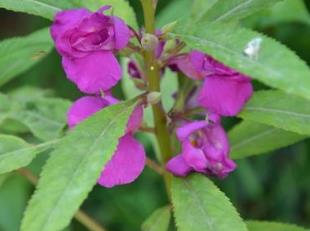
4. There is also a method of mechanically spreading seeds: impatiens will crack its fruit and send bullets in all directions, which is the method of mechanically spreading seeds. There are also many legumes that transmit seeds mechanically.
On the surface of the seeds that fall on the ground, there are still some remaining nutrients for the ants to ingest, and at this time the ants become second-hand communicators. The above phenomenon also occurs in the seeds of self-transmission or mammalian transmission.

The spread of mammals, most of them belong to some medium and large succulent fruits or dried fruits. Generally speaking, mammals are relatively large in size and have large food requirements, so they will choose some large fruits. For example, macaques like to eat the fruits of hairy persimmons and plantains, which also help these plants spread.
Plants that spread their seeds in different ways
1. Rely on water to spread coconut: spread by water. After the coconut is ripe, the coconut falls into the sea and floats away with the sea. Water lilies: the fruit of water lilies sinks to the bottom after ripening. When the pericarp is rotten, the seeds covered with a spongy outer seed coat float and float elsewhere.
2, rely on birds or other animals to spread cherries, wild grapes, wild ginseng: rely on birds or other animals to eat seeds into the stomach, because it can not be digested, it will spread in all directions with feces. Pine nuts: they are taken away by squirrels when they store food for the winter.
3. Rely on the wind to spread the red willow: it depends on the flying of catkins to spread the seeds to the distance.

4. There is also a method of mechanically spreading seeds: impatiens will crack its fruit and send bullets in all directions, which is the method of mechanically spreading seeds. There are also many legumes that transmit seeds mechanically.
Related
- Wuhan Hospital Iron Tree Blooming Result Was Instantly Frightened by the Gardener Master
- Which variety of camellia is the most fragrant and best? Which one do you like best?
- What is the small blue coat, the breeding methods and matters needing attention of the succulent plant
- Dormancy time and maintenance management of succulent plants during dormancy
- Minas succulent how to raise, Minas succulent plant pictures
- What are the varieties of winter succulent plants
- How to raise succulent plants in twelve rolls? let's take a look at some experience of breeding twelve rolls.
- Attention should be paid to water control for succulent plants during dormant period (winter and summer)
- Watering experience of twelve rolls of succulent plants
- Techniques for fertilizing succulent plants. An article will let you know how to fertilize succulent plants.



